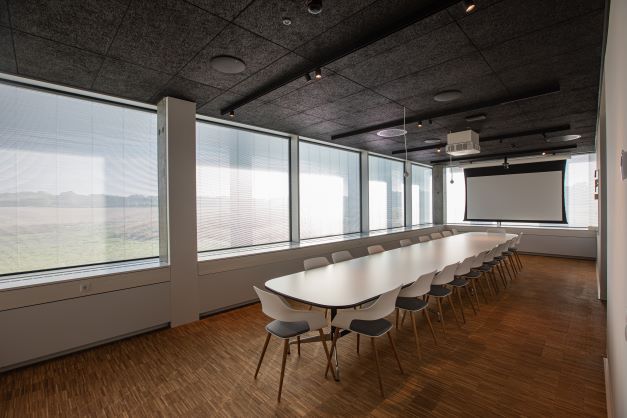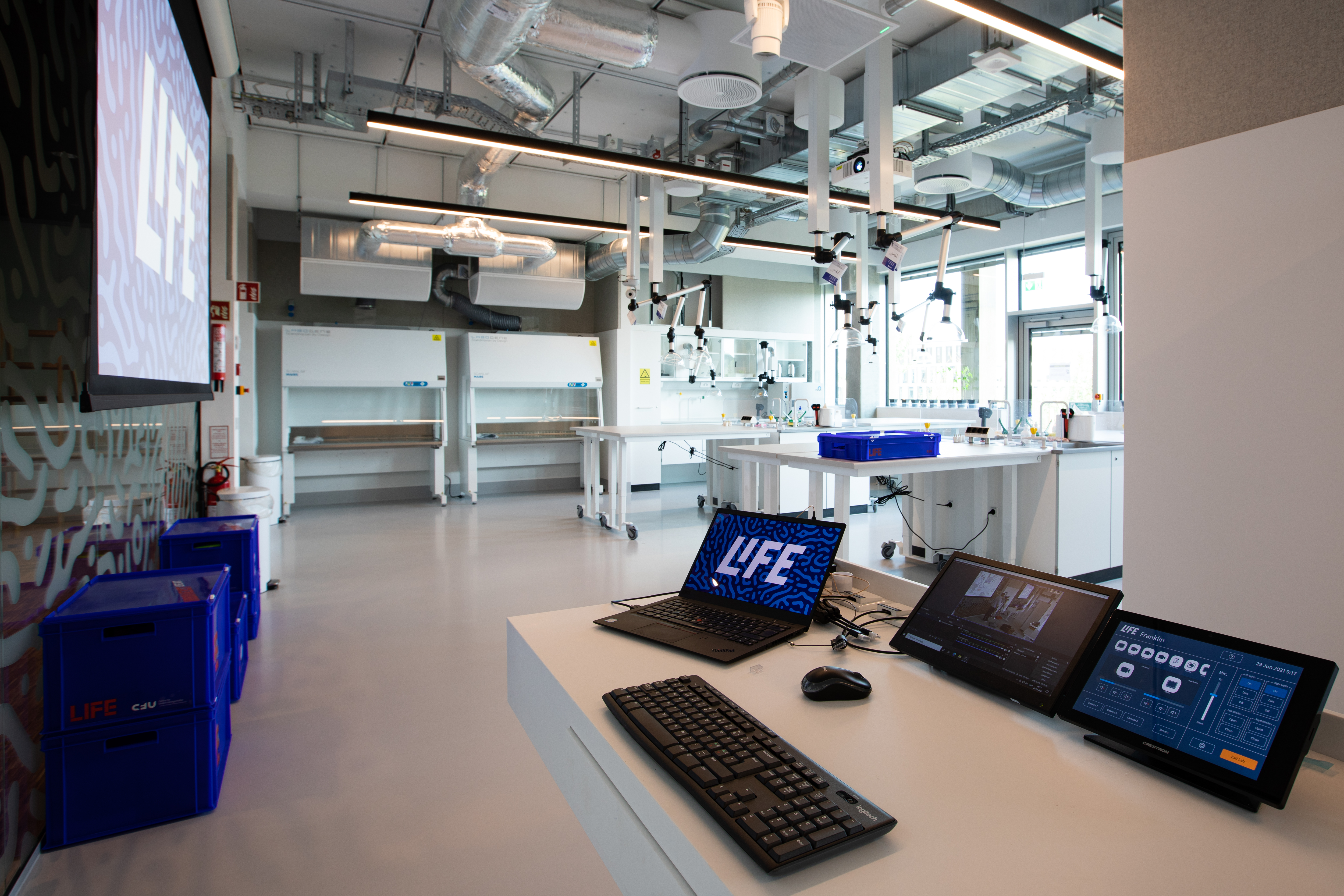LIFE Campus was created to give young Danish students intensive engagement with a range of learning experiences in STEM—science, technology, engineering, and mathematics. Certainly, local field work and laboratory experiments are fundamental to scientific exploration, but LIFE Campus also has world-leading resources for giving students memorable learning adventures in 360-degree immersive environments created by cutting-edge digital technologies. The facility’s extensive AV systems and sophisticated control networks, designed and installed by the consulting and integration firm Stouenborg, include a total of more than sixty Meyer Sound self-powered loudspeakers.
Located in Lyngby, adjacent to the Technical University of Denmark, LIFE Campus is operated by the non-profit LIFE Foundation and was founded with the mission of inspiring Danish school children to become fully engaged in their formative years with inquiry-based science education. The new 5,400-square-meter facility, opened in late 2021 by HRH Crown Prince Frederik of Denmark, is situated in an expansive natural area.
[Meyer Sound Roadmap 2022]
“The LIFE Foundation is an ambitious project with the purpose of strengthening young students’ knowledge of—and fascination with—the natural sciences,” said Mogens Laursen Hastrup, head of AV operations for the campus. “Therefore, we wanted to have only the best technical elements in our education center. And that includes outstanding sound systems which afford extraordinary opportunities for auditory support of teaching.”

For large group learning experiences, LIFE Campus offers the innovative Kolossalen (“Colossal Hall”), a large open space that can be divided into two separate rooms. All the walls can serve as projection screens using 11 Panasonic projectors, and to control the acoustics the wall surfaces employ a perforated metal material that helps keep the reverb time to an intelligibility-friendly 0.8 seconds.
One side of the room, with a tiered floor, is termed “Auditorium 180.” Here, sound and visuals are oriented to one side with Meyer Sound’s CAL 96 column array loudspeakers—concealed behind the perforated wall/screen surface—using advanced beam-steering technology with beam-splitting capability to precisely tailor coverage to the tiered seating areas.
[InfoComm 2022 Preview: Meyer Sound to Debut PANTHER Line Array Loudspeaker]
The other half of the space, when divided and enclosed, is referred to as “Auditorium 360.” From an audio aspect, the most striking feature here is the dynamic spatial audio enabled by Meyer Sound’s powerful yet easy-to-master Spacemap Go spatial sound design and mixing tool. Using an intuitive iPad interface, Spacemap Go allows the user to freely move sounds around and through the space, directing them to the 26 full-range loudspeakers and four subwoofers, either singly or in loudspeaker groups.

“When designing this space, we consulted with workgroups of teachers and tech personnel,” noted Anders Jørgensen, project manager for Stouenborg. “They wanted to have 360-degree projection, and although Spacemap Go had not yet been introduced, I knew it was coming. I recommended we support the projection with dynamic spatial sound. The idea was accepted by the group, and fortunately Spacemap Go arrived in time.”
The Auditorium 360 system deploys 12 HMS-10 surround loudspeakers around the walls, with four more in the ceiling along with 10 UP-4slim compact loudspeakers. Four MM-10XP miniature subwoofers supply deep low frequencies.
[Meyer Sound Powers the Soundtrack for the World’s Largest Digital Art Center]
A key element in making the concept work, according to Jørgensen, was the flat-profile of the HMS-10. “The speakers are all hidden behind the perforated walls, and the HMS-10s were the only ones with the power to project through the walls and still fit in the space allowed.”

The room’s capabilities have opened new horizons for learning, according to Mogens Laursen Hastrup. “The multiroom allows us to present scientific phenomena—such as extreme weather, atomic structure, or lunar landscapes—in completely new ways to get the pupils’ attention and stimulate their interest. The dream is that, when they leave LIFE Campus at the end of the day, they think science is cool and they want to learn more.”
Other Meyer Sound systems are installed throughout the campus, with Ashby-8C ceiling loudspeakers in the three laboratory classrooms (eight in each), in the large meeting room (four), and in the foyer (16). In the intimate canteen, full-range music reproduction is supplied by two MM-4XP miniature self-powered loudspeakers augmented by an MM-10ACX subwoofer.
[Executive Q&A: Back to Business at InfoComm 22]
“Our AV systems are crucial to the support of teaching at LIFE Campus,” concluded Hastrup. “The projectors and sound systems are the first to be turned on in the morning and the last to be shut down at the end of the day.”
LIFE Campus was designed by Vilhelm Lauritzen Architects. The architecture is inspired by DNA strings, Fibonacci sequences, and other scientific and mathematical patterns. The façade features 96 solid oak columns. Major funding for the LIFE Foundation is provided by the Novo Nordisk Foundation. At Integrated Systems Europe 2022, LIFE Campus won an Inavation Award in the “Education” category.






More Stories
What is Political Science?
History of Educational Technology
Adult Education – How is it Different?